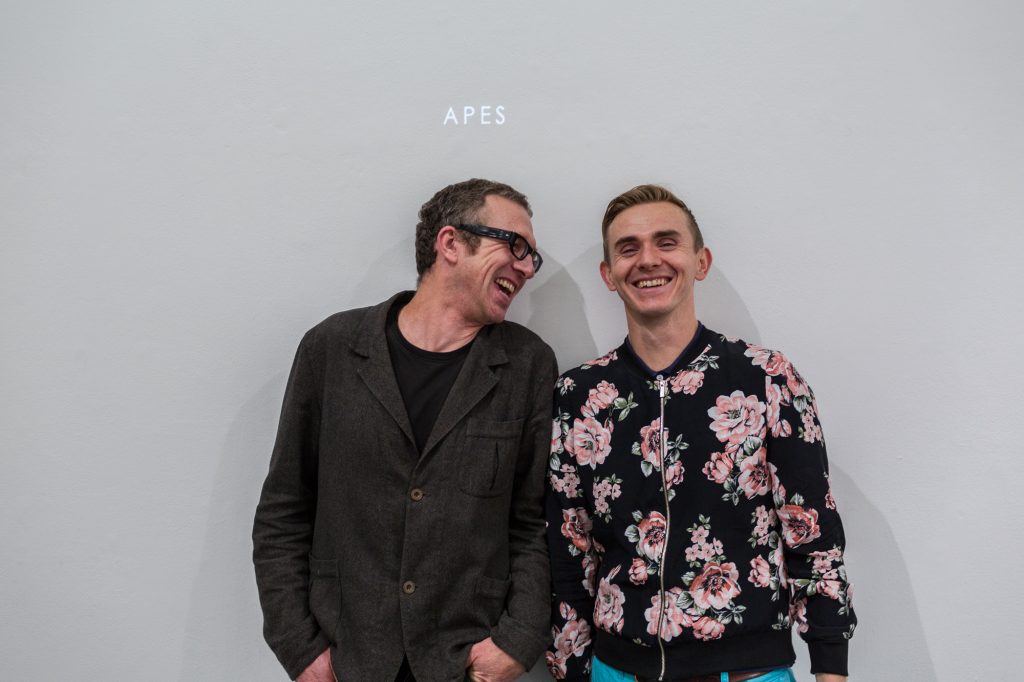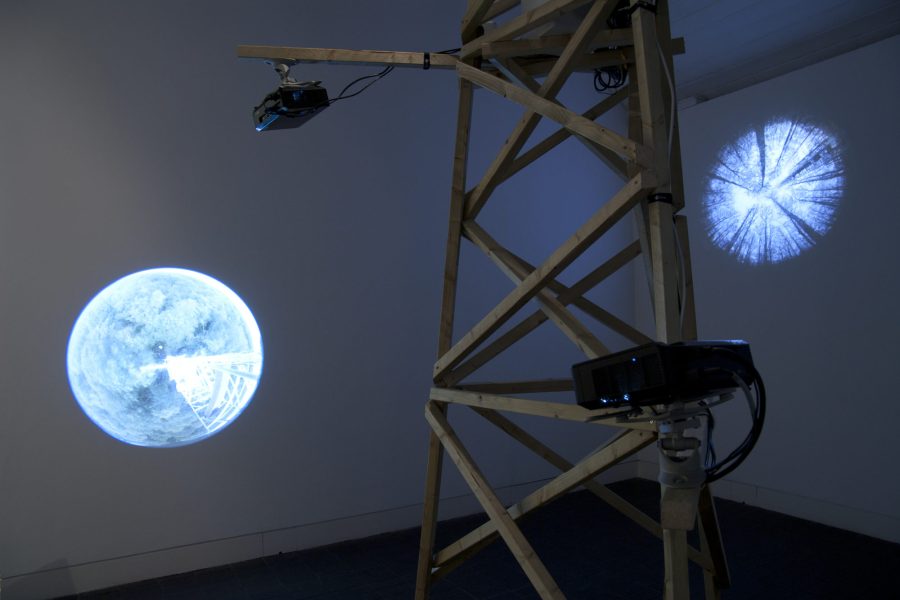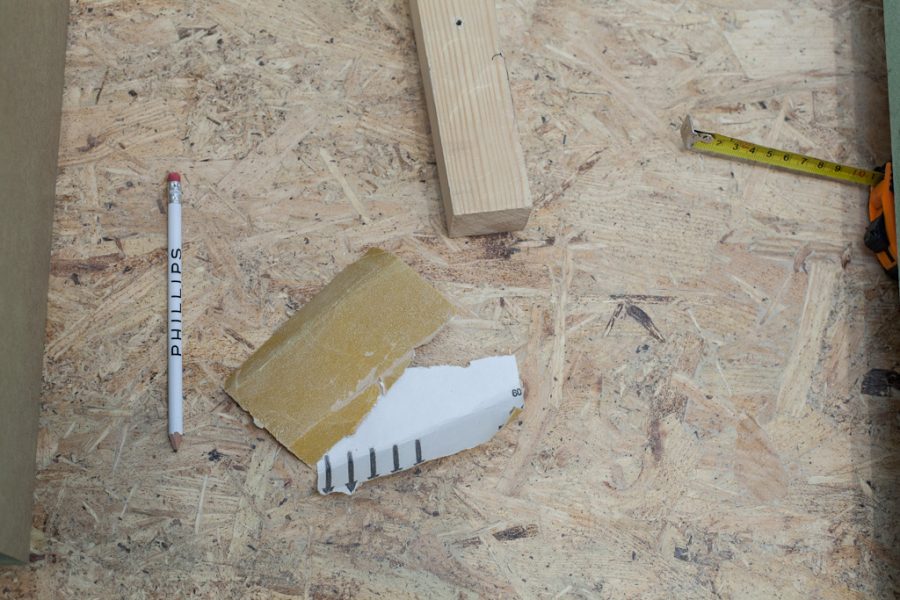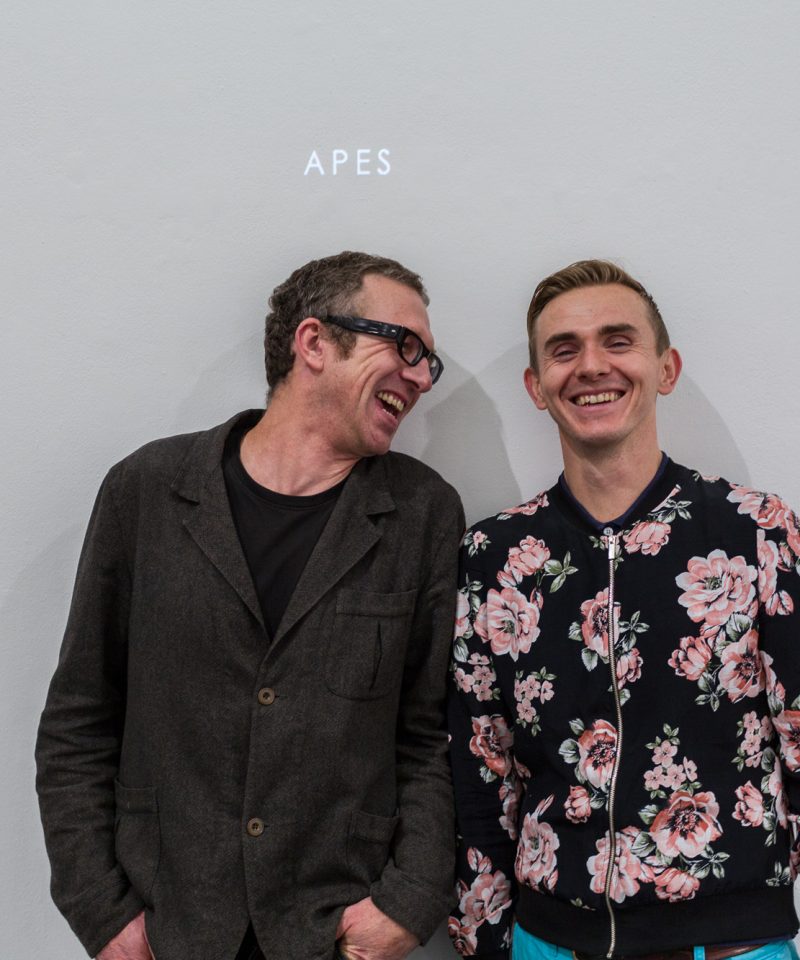David Rickard’s proposal for Jerwood Open Forest, Returnings, is a dialogue between artist, poet and forest. Taking apart an old structure on the verge of demolition, Rickard proposes to return the substantial elements to the forest — for the modified wooden pieces, packaged by man, to sit, again, amongst their untouched counterparts. Each piece of reclaimed timber is to be inscribed with a word taken from a commissioned piece of writing. The composite poem, written by SJ Fowler, was formulated on the basis of this framework — the amount of words determined by the amount of reclaimed wooden pieces. Introduced back into the forest in a sparse, mile-long, circular formation, the poetic trajectory becomes cyclical, always returning to itself, and inevitably culminating in a natural demise.
I spoke to David Rickard and SJ Fowler about the proposal, the role of collaboration in this project, and their wider practices.
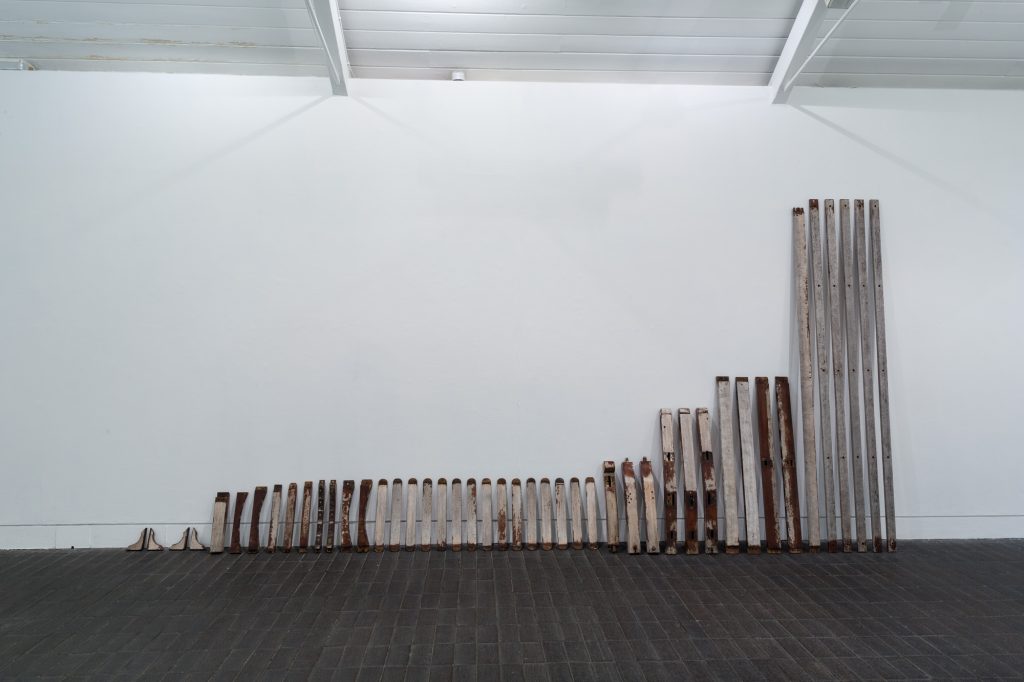
Kathryn Lloyd: Your Jerwood Open Forest proposal includes a collaborative element — with poet SJ Fowler. Is collaboration an important part of your practice? That is, in practical terms, but also in theoretical terms? Looking at your projects, I can see patterns of participation and coalition — discarded fragments coming together to form larger forms, interdependency between various elements, and larger structures which are broken down into their components.
David Rickard: Although my practice isn’t purely focused on collaborative working, it’s an important part of what I do. During the past few years I’ve collaborated with a fairly wide range of people; from photographers to divers, priests, doctors and architects. My interest in collaboration does have a practical aspect, as certain people are far better placed than me to realise aspects of some works. However I’m also very interested in the unexpected results that collaborations can create. For the Jerwood Open Forest commission the original concept included interweaving written text with a demolished timber structure, however during the initial proposal I wasn’t sure where the words would come from …..that came later.
KL: Would you be able to elaborate on your collaboration with these people — in what capacity did you work with priests, for example?
DR: I won’t go over the details on all of the collaborations, however the priest was an Irish Bishop based in the Mato Grosso Plateau in Brazil. Last year he helped me realise one quarter of the work ‘We are all Astronauts’ which documents a series of installations in Brazil, French Polynesia, Australia and Mozambique.
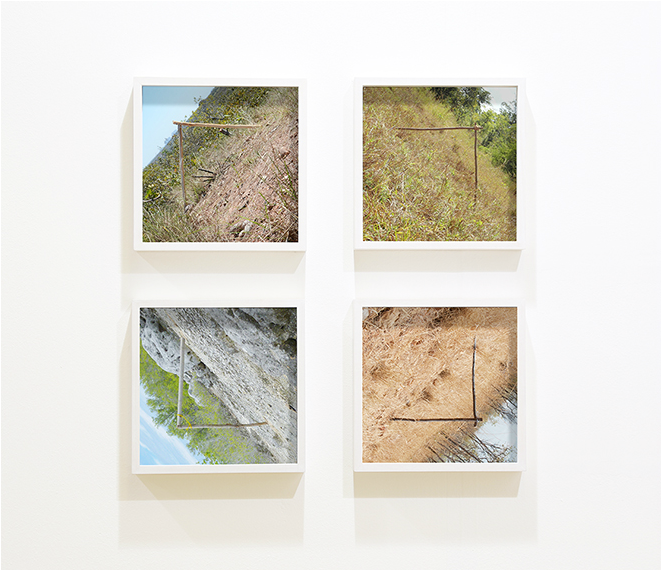
KL: Steven, collaboration also seems to be a vital part of your practice. Would you be able to discuss this a little bit — in terms of what sort of role collaboration can play in poetry and performance?
SJ. Fowler: Collaboration is pivotal to me. So much to say here, but to cut to the quick, collaboration is not a method; it is human interaction, just with a creative goal as the excuse. Friendship, love, family — this is collaboration. I wish to spend my life in the company of people happily making things, being challenged by their intelligence and thoughts, being provoked into that which I wouldn’t have seen alone. It in no way eats into the solitary process — one so exclusively associated, bizarrely, with poetry, it often seems. In this specific case, with David’s gesture, to open his project up to a stranger, I took it be an extraordinary act of hospitality, of generosity, of humility, that he and I shared some essential methodological appreciation of collaboration, and so I felt responsible to really commit to the work, in all ways. It has proved to be a really brilliant time — all of it positive, a real highlight of my year.
KL: David, your proposal incorporates text through the use of Steven’s poem. How do you associate with the role of writing — do you also like to write? Or is text something that you find more natural to incorporate when written by someone else?
DR: I initially considered a few options for creating the text; one was to find an existing text of specific relevance, however once I’d determined that the number of words within the text would be informed by the number of pieces of timber within the installation it became clear a new piece of writing should be created as part of the work. I thought about writing the text myself, however it was clearly a great opportunity to open the project up to collaboration. Working with SJ Fowler resulted in a very rewarding dialogue on the relationship between object and text.

KL: Steven, how did you approach writing with a framework like this in mind? I suppose in theory it’s a simple word count! But, did it feel different, creating a piece of writing to these specifications, for this purpose, knowing how it was going to be displayed?
SJF: I’m a big believer that mistaken notions that surround the creative process, within poetry specifically, but literature as whole, limit the medium’s growth into a truly contemporary form. This task was a perfect example of a few of these — how they appear to me exciting, or certainly the very thing I’m looking for, to grow as a poet and a human.
Prosaically there was, as you say, a word count limitation, but this is no more limiting than the thousands of constraints that hamper every piece of work, be it the poet’s language, their reading material, their mood, their method, etc. So in a way, this is a freeing limitation, a paradoxical emancipation, to have such a specific goal. I really love that. More profoundly, I felt I was responsible to David, to his work and vision, and the concepts so resonantly and eloquently present in his proposal and general practice. The notions of decay, material, presence, the geographical specificity, all this awareness, it cannot be separated from David’s way of making, of thinking. So I felt first responsible to that. This was the challenge really, to meet this expectation, but naturally self-imposed to a certain extent. Again, these challenges exist for all people, whether we set them on ourselves or they come from without, it is the same, and it’s so exciting. So I produced some text quite freely.
KL: David, your proposal takes apart the narrative of a structure by separating out all of its elements, and inscribing each element with Steven’s words which, although composed as part of a trajectory, is taken apart from it. For me, this sort of positive destruction of narrative parallels the death of the author and the idea of plurality. During this process, do you have any sense of authorship? Do you have any sense of when something loses its ascribed meaning or re-gains it, or is the dismantling a way of acknowledging/performing the arbitrary nature of labelling and naming?
DR: I don’t see the dissection of the text into the separate words as an acknowledgement of arbitrary labels, but more like a loosening of constraints, an opening up of associations between individual words and the full body of text. I found it interesting that physical objects could determine the specific number of words to be used and also the way in which the installation required a cyclic text with no beginning or end. Both of these constraints were embraced by SJ Fowler. Another part of the proposal stipulated that during the gradual decay of the installation over the coming years the timber elements that fall over will not be reinstated. Therefore the installation and the poem will change over time, as the forest environment slowly subtracts words from the body of text. So I guess the authorship of the text changes hands several times between artist, poet and forest.
KL: Was this something that was clear to you from the beginning — that you wanted to create something that wouldn’t be maintained? There is a huge respect for the nature of the forest in your proposal — in, as you say, the authorship being fed between artist, poet, and forest. Your proposal is very much about embracing the natural, fundamental elements of a forest.
DR: Many of my works engage processes beyond my control. The forest is such an aggressive environment and therefore it felt like a natural decision to embrace rather than resist the decay that will inevitably happen to the work.
KL: Steven, I was wondering whether you had any thoughts about the role of authorship when the poem goes through this process?
SJF: I think this was one of threads in David’s thought which propelled me further in my writing and thinking around the project. The natural conclusion of this lack of maintenance is that the work dies. It rots away into that which it is about. Like us, though that’s heavy handed to say, but still to me, where my work is very often about death and its banality and how much we do to not think about it, a very powerful notion. It also negotiates David’s proposal through the problems many works have in being utopian, always seeking some sort of unlikely, physical legacy, beyond the life of the artist. This disappearance of the work, of my words, the poem being edited by the forest itself, as words fall away and new enjambments happen, is a sign of humility I think, of respect.
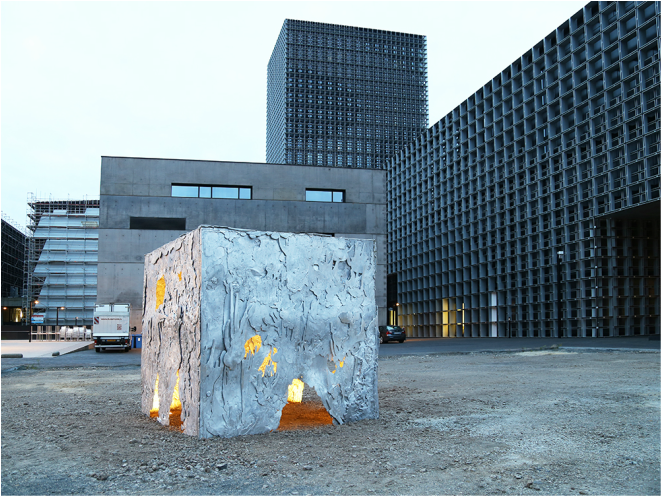
KL: David, your projects are so highly considered and presented in a way which reflects that — even when they utilise discarded, remnant materials, you re-package them in a very ‘consumable’ way; they capitalise on the cohesiveness of reinvention. It makes me wonder what your research looks like, what sort of things do you collect. Do you draw at all, is you research often online, etc.?
DR: The creation of consumable things isn’t a focused objective. I’m more interested in following the course of processes and ideas. I think my research follows fairly typical patterns. I read, I use a sketchbook as part of my daily practice for drawing and notes and naturally the internet is pretty fundamental. Another important part of research for me is conversations with people involved during the development of each work.
KL: Your ideas and processes seem so closely interlinked — as with the proposal, and the amount of elements of the structure determining the amount of words. Is there a point where one leads the other, or do you find these difficult to extricate from one another?
DR: Ideas and processes tend to build a certain momentum during the development of each work. Sometimes things stick and a work stays in my sketch book unrealised for years. However with the work ‘Returnings’ things developed very fluidly. There is a sequence of thought, however it’s not linear, it is more like a conversation between elements and ideas.
